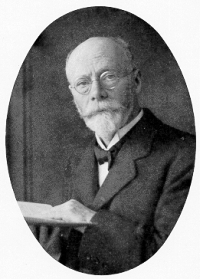

Uber die Form des menschlichen Electrocardiogramms. The string galvanometer electrocardiograph. Dordrecht, The Netherlands: Kluwer Academic Publishers, 1995.ĭe Waart A. Willem Einthoven (1860-1927): Father of Electrocardiography. Willem Einthoven-The father of electrocardiography. Did Einthoven invent a string galvanometer? Br Heart J 1987 57: 190-193. Biziehungen zwischen den capillaren und elektrischen Erscheinungen. A demonstration on man of electromotive changes accompanying the heart's beat. Waller before Einthoven in the clinical development of noninvasive ECG. A centennial note on Waller and the first human electrocardiogram. AD Waller and the electrocardiogram, 1887. Die galvanometrische Registerung des menschlichen Elektrokardiogram: Zugleich eine Beurtheilung der Anwendung des Capillar-Elektrometers in der Physiologie. Rosentein: Leiden Eduard Ijdo Leiden, 1902: 101-106.Įinthoven W. Galvanometrische registratie van het menschelijk electrocardiogram. A history of the origin, evolution, and impact of electrocardiography. A hundred years of progress in electrocardiography 1: Early contributions fromWaller toWilson. Chicago IL: Year Book Publishers, 1964.ĭavies MK, Hollman A. Bethesda, MD: American Physiological Society, 1964: 265-347.īurch GE, DePasquale NP. The development of the understanding of arrhythmias during the last 100 years. Electrocardiography then and now: Where next? Br Heart J 1987 56: 84-491. New York: The Parthenon Publishing Group, 1994: 501-551. Centennial of the string galvanometer and the electrocardiogram. Evolution of the clinical electrocardiogram. He was awarded the Nobel Prize in 1924 (2 years after Waller's death) in physiology and medicine, “for the discovery of the mechanism of the electrocardiogram.”įisch C. Einthoven recognized the great potential importance of the ECG as a diagnostic and investigative tool and his achievements made him the founder of modern electrocardiography. Einthoven also conceived the famous equilateral triangle with leads I, II, and III at its sides and the calculation of the electrical axis (in the frontal plane) depicted as a single vector with an arrow at the center of the triangle. Einthoven developed a system of electrocardiographic standardization that continues to be used all over the world and introduced the triaxial bipolar system with 3 limb leads and thus established uniformity of the recording process. This report contained a wealth of ECG patterns and arrhythmias. The clinical use of Einthoven's immobile equipment required transtelephonic transmission of the ECG from the physiology laboratory to the clinic at the Academic Hospital about a mile away as documented in the 1906 paper on the “télécardiogramme”. The year 2002 marks the centennial of Willem Einthoven's first recording of the ECG in a clinically applicable fashion with the string galvanometer. Einthoven published his first article about the string galvanometer in 1901, followed by a more detailed description in 1903 which included a report of ECGs taken with the new instrument. He later further improved ECG recordings with the introduction of a string galvanometer of his design. Willem Einthoven (1860–1927) who was professor of physiology at the University of Leiden, The Netherlands, began his studies of the ECG with the mercury capillary electrometer, and improved its distortion mathematically so that he was finally able to register a good representation of the ECG before the beginning of the twentieth century.

The tracings were poor and exhibited only 2 distorted deflections. The first electrocardiogram (ECG) from the intact human heart was recorded with a mercury capillary electrometer by Augustus Waller in May 1887 at St.


 0 kommentar(er)
0 kommentar(er)
